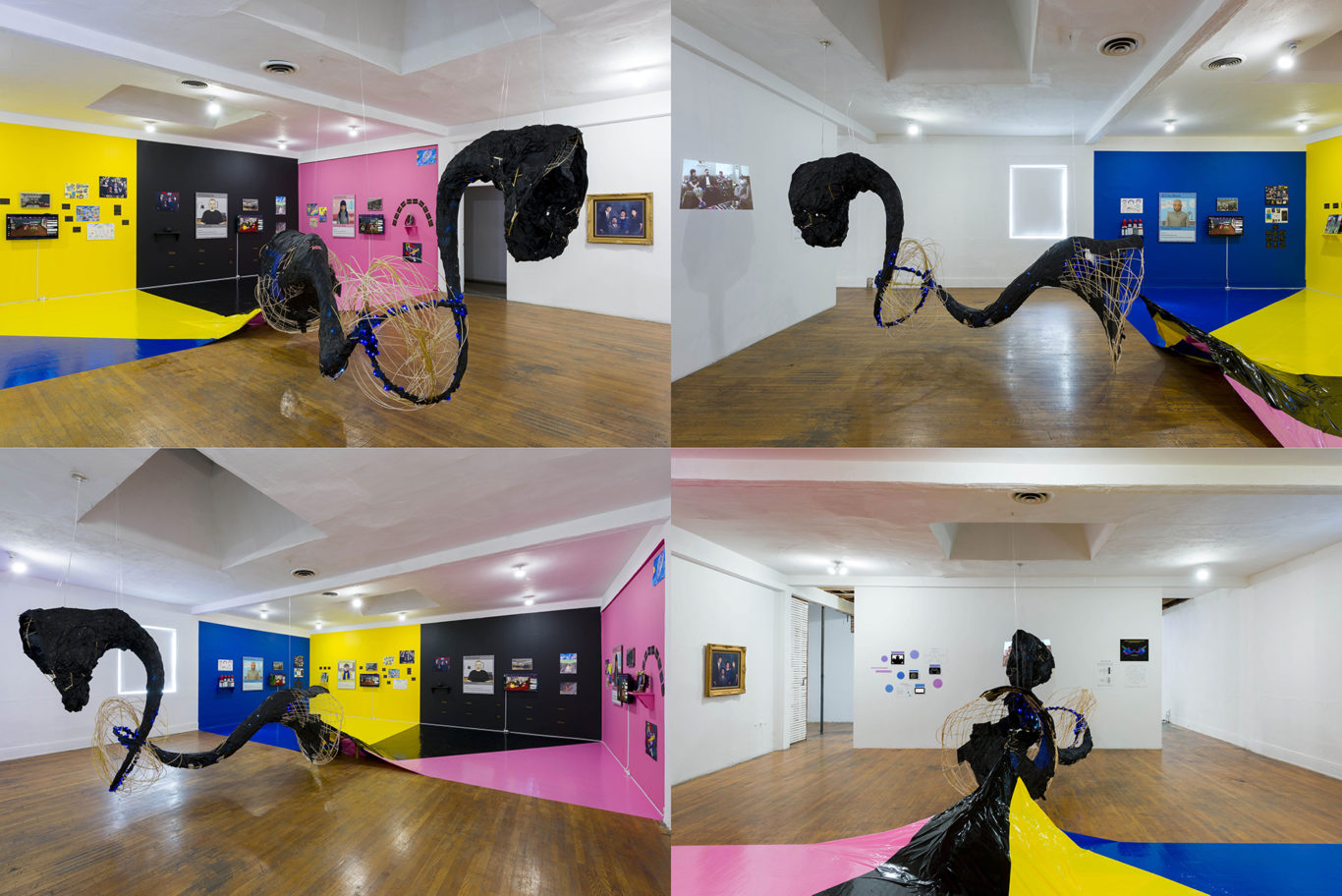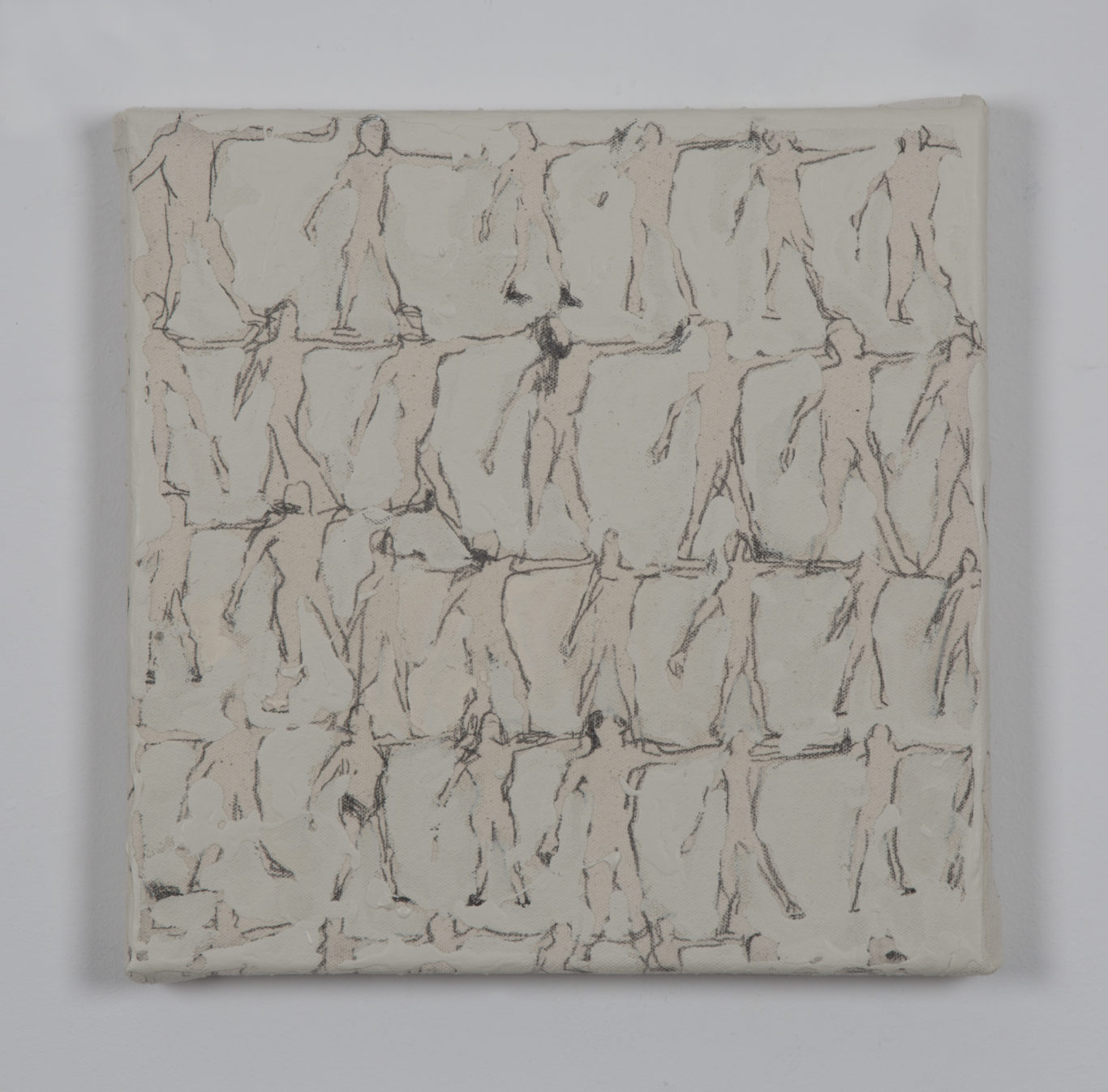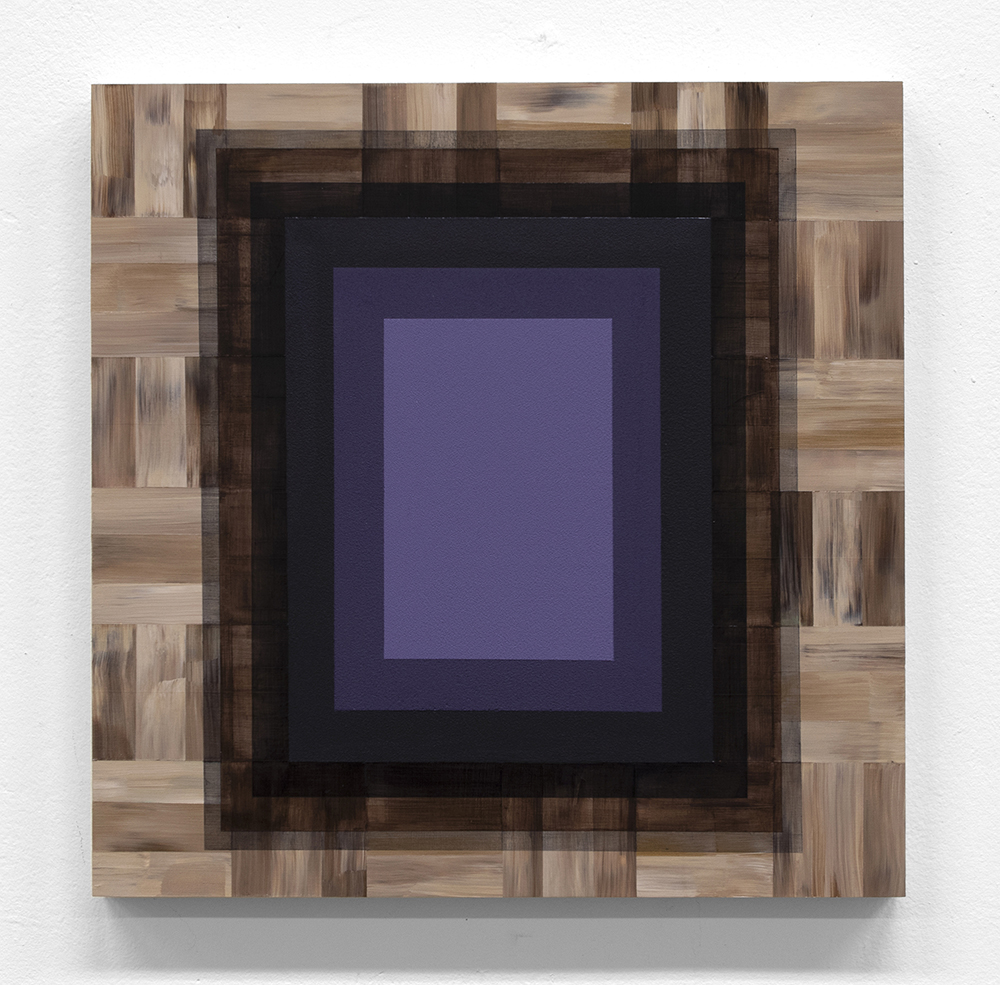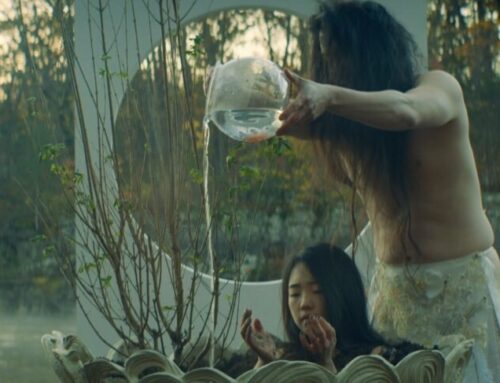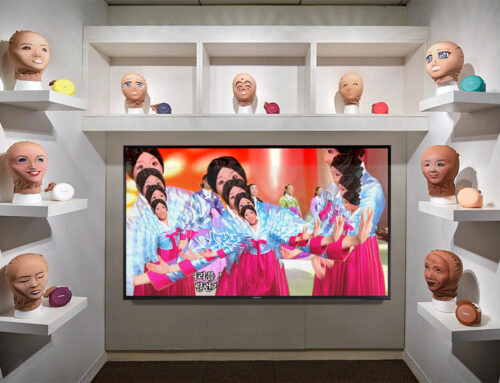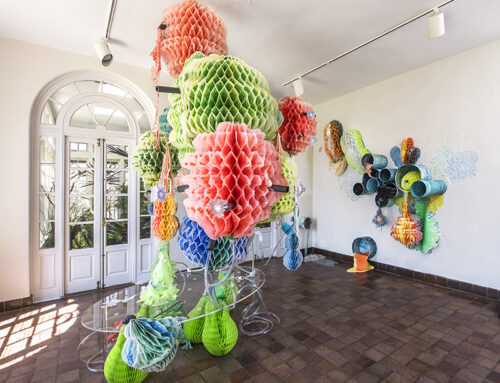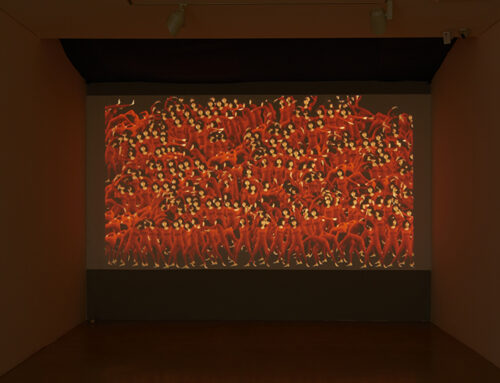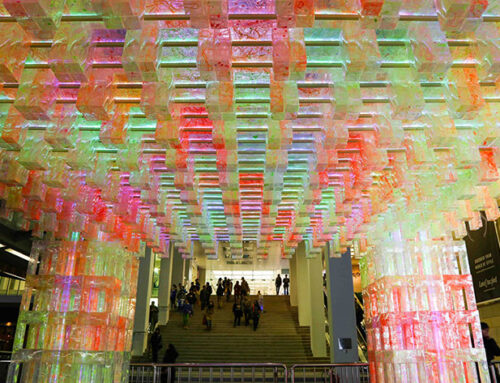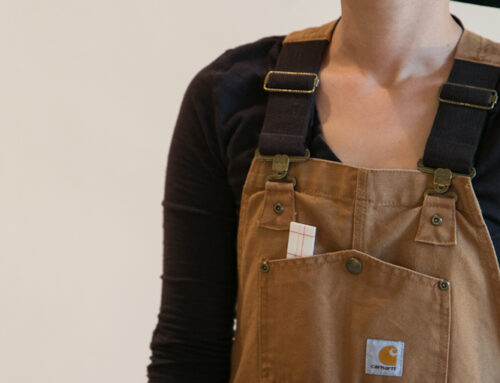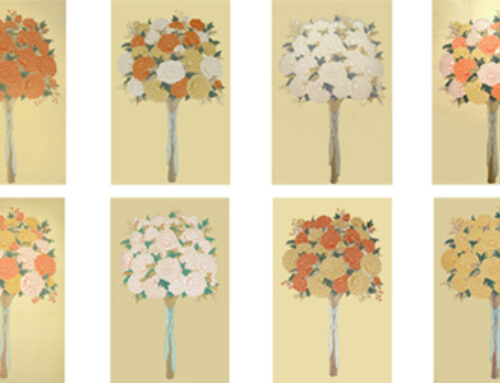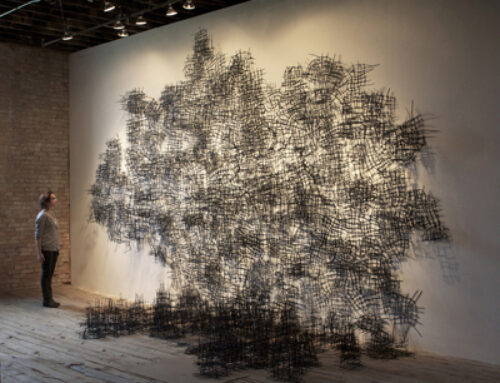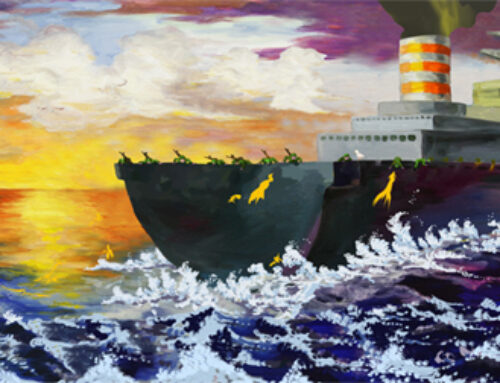Gold Award: Jennifer Moon
“Familial Technologies,” 2018: Installation View
Silver Award: Jean Oh
Defence, 2019, 14″x 14″ Work Sample
Bronze Award: Mary Laube
My Lunar Plexus, acrylic on panel, 12″x12″, 2018
Comments from the jurors
Keith Schweitzer (Owner/Director of SFA Projects, New York)
Jennifer Moon utilizes constructed worlds to address the real one. Moon’s use of fantasy card games, video game avatars, children’s film environments, and the like, we are disarmed and distanced enough to contemplate deeply personal and often difficult, awkward subject matter. Moon creates highly convincing facsimiles of the “templates” employed in each work, so that they appear real (as a game card or character), but replaces the original content and intent with Moon’s own highly personal explorations. The result is jarringly effective: we are whisked away by the whimsy into spaces of freedom where all discussions feel safe.
Jean Oh uses graphite and acrylic sparingly on her canvas, which bring her substrate materials into the forefront of her pictorial conversations. Raw canvas and stitching become field and line, interplaying with her rendered objects and figures. Hard edged mark-making define some sort of narrative which falls away as our attention is pulled to beckoning expanses of surface and pools of textured pigment. Her muted palette accentuates these voids and give the scrawled drawn elements levity despite their cartoonish qualities.
Mary Laube‘s paintings are portraits of objects that evoke domesticity and nostalgia. Laube compresses her subjects to the point where they seem like collages of cardboard cutouts, or miniaturized theatrical dioramas, to delightful effect. This flattening is disorienting against her convincing rendering of texture and materiality. We’re presented with an illogical, artificial reality that feels familiar. Laube seems to have fun in her handling of texture and surface, and in her use of color and pattern, yet there is a seriousness to it all – an invisible weight – which probably explains the flattening.
Stamatina Gregory (Curator and art historian, and the Associate Dean of the School of Art at The Cooper Union)
Jennifer Moon’s work, at first glance, seems in thrall to the vernacular: Disney songs, Dungeons and Dragons, family photos. But her light touch is deceptive. She uses the lexicon of popular and vernacular culture—the forms of expression internalized over generations – and turns their ideologies inside out, opening up a space for us to reconsider our own most deeply held beliefs, assumptions, and values. Perhaps most radical is her work around the various iterations of love—erotic, familial, humanitarian—as an affective site which initially seems to operate outside revolutionary politics, but which conversely exists at its very core.
Jean Oh’s works embody a particular kind of paradox. Her figures and forms are rendered in the most simple gestures on an unfinished canvas ground (occasionally primed with smudges, erasures, and smears of gesso). They appear unfinished, a sort of visual marginalia. And yet, this unfinished state is a remarkably generous one: through it, we are drawn into her process, the mark of her hand as it renders and obscures and re-renders. The experience of looking becomes haptic: a feeling outside language (to point, one of her works is titled Mute; another, Oh, You Know). As we exist day to day in a culture drowning in information, what becomes critical is what is unheard, and unsaid: what is silent, and what is silenced.
Mary Laube reclaims the language of modernist painting, wresting it away from midcentury discourses on “flatness” and “medium specificity,” and creating a window into playful and contemplative spaces. Her paintings have both a bold formal strength and a deep intimacy, structured around the dense topography of braided hair, the pattern of a hanbok, the shallow recesses of a shelf—forms of deceptive simplicity that articulate themselves through uncannily prominent shadows. These are paintings that speak to the depths of individual memory; paintings that, over time, keep giving.
Hitomi Iwasaki (Director of Exhibition / Curator of Queens Museum)
Jennifer Moon is an interdisciplinary artist self-described as a “life-artist, committed to expanding beyond binaries, hierarchies, and capital!” From object-making, performance to video but she transcends the studio to incorporate every (well, almost) aspect of life and lifestyle, character, community into her genre-defying practice. With often profoundly absurd and obsessive approaches in art-making, Moon addresses a question of viewership and the tensions between realism and reality, and personal, familial, and public boundaries in art.
Jean Oh‘s lines and shapes seem decisively indecisive, awkward and insecure. Dominantly monochromatic on humbly scaled picture planes, the emotional and gestural quality of the image’s border between representation and abstraction. It does not feel very twenty-first century, but rather belong to the previous one. It is this distinctly poetic and archaic property in Oh’s work that seeks human narrative, presence and/or absence of humanity.
High-contrast, hard-edge graphic quality of Mary Laube‘s painting borders between representation and abstraction, material and immaterial. Her use of shadow suggests the real-life physicality of the image’s origin — even anthropomorphic in some cases — is about system and role of human memory. By doing so it points to the precarious relationship between experience and existence of memory in our increasingly material-oriented (alas while digitally processed) global culture.

